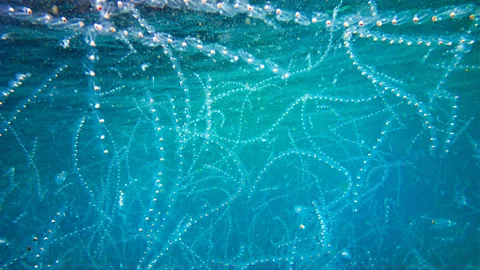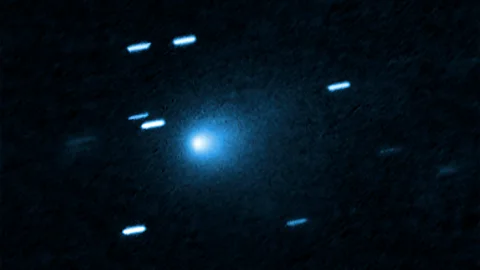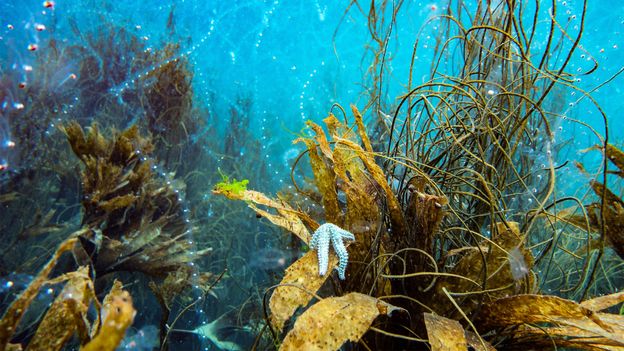The most striking science photos of the week: including the Perseid meteor shower and glowing underwater wonders.
Record warm seas have brought an extraordinary range of new species to UK waters. Britain’s seas have had their warmest start to the year since records began, with BBC analysis finding that the average sea temperature from January to the end of July was more than 0.2C (about 32F) higher than any year since 1980. Bluefin tuna have been spotted in the warmer waters, as well as salps, glowing marine animals which look a bit like jellyfish and are rarely found in the UK.
Mark Poynting and Justin Rowlatt have the story.
 Heather Hamilton @cornwallunderwater
Heather Hamilton @cornwallunderwaterAn interstellar visitor
A team of astronomers has captured the sharpest ever photo of a high-speed comet visiting our Solar System from elsewhere in the Milky Way galaxy, using Nasa’s Hubble Space Telescope. The comet 3I/Atlas is only the third known interstellar visitor, and Nasa estimates that it was travelling at a staggering 130,000 miles (209,000km) per hour, the highest velocity ever recorded.
“No one knows where the comet came from. It’s like glimpsing a rifle bullet for a thousandth of a second,” David Jewitt, an astronomer at the University of California, Los Angeles, and science team leader for the Hubble observations, said in a statement.
 Nasa, Esa, David Jewitt (UCLA
Nasa, Esa, David Jewitt (UCLA
